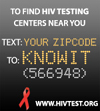|
1/17/2009's Health News
Last Seven Days' Health News 
|
HealthDay Reporter
WEDNESDAY, Jan. 14 (HealthDay News) -- Women under 35 who undergo six cycles of in vitro fertilization have up to an 86 percent chance of giving birth, a new study found.
But for women over 40, the odds are less than 50 percent -- in some cases, significantly less.
"IVF is a mainstay of the treatment of infertility, and it can overcome most causes of infertility for those under 40," said study senior author Dr. Alan S. Penzias, surgical director of Boston IVF, and an associate professor of obstetrics, gynecology and reproductive biology at Harvard Medical School.
But, he added, "Fertility is a function of age. It starts to decline at age 27, and the most pronounced decline is above age 40."
"Unfortunately, there's no test that shows when fertility starts to decline," said Dr. Jamie Grifo, program director for the New York University Langone Medical Center's fertility clinic, who added that this study could serve as a reminder to women to "be really thoughtful about the decisions you make about the reproductive process. Don't expect to be able to get pregnant at any time. You don't have to be pessimistic, but the older the patient, the lower the chance of success, unless a couple is willing to consider donor eggs."
The new study, published in the Jan. 15 issue of the New England Journal of Medicine, looked at IVF success in a different way. Traditionally, IVF success is reported as the number of pregnancies per cycle of IVF treatment, but that doesn't let couples know the exact odds of having a pregnancy that ends up with a healthy baby. And that information is exactly what people want to know, Penzias said.
"Couples really want to figure out how likely it is that they'll have a baby if they undergo IVF," he said.
To give people a better idea of the live-birth rates, Penzias and his colleagues followed more than 6,000 women undergoing IVF at a large center. Almost 15,000 cycles of IVF were completed. A cycle is the implantation of one or more eggs. Penzias said for this study, an average of 2.3 eggs were transferred for the first cycle and 2.8 for the sixth.
The overall live-birth rate after six cycles of IVF was between 51 percent and 72 percent. For women under 35, the rate was 65 percent to 86 percent. The rates differed, because not all women returned for all six cycles, the researchers said.
So, the researchers developed a best-case and worst-case scenario to account for these women. The highest number assumes that the women who stopped IVF treatments would have had a baby, and the lower number assumes that none of them would have. The actual number likely lies somewhere in between those two scenarios.
Penzias said that means that women under 35 who go through IVF have roughly the same chance of having a baby as someone who's a similar age in the general population.
The live-birth rate decreased as the age of the women increased, and women over 40 had only between a 23 percent to 42 percent chance of having a baby.
Overall, about 70 percent of the women had one baby, and less than 30 percent had twins. Fewer than 2 percent had triplets, according to the study.
"It's not a surprise to know that if you do more than one IVF cycle, you have a better chance of having a baby, but this study gives an indication of what one can expect if one is going to do IVF and try it multiple times," said Grifo, who added that the bottom line is, "that for any one woman, each cycle is either 100 percent or zero percent."
More information
To learn more about in vitro fertilization, visit the American Pregnancy Association  .
.
Copyright © 2009 ScoutNews, LLC
 . All rights reserved.
. All rights reserved.HealthDayNews articles are derived from various sources and do not reflect federal policy.
omhrc.gov does not endorse opinions, products, or services that may appear in news stories.


